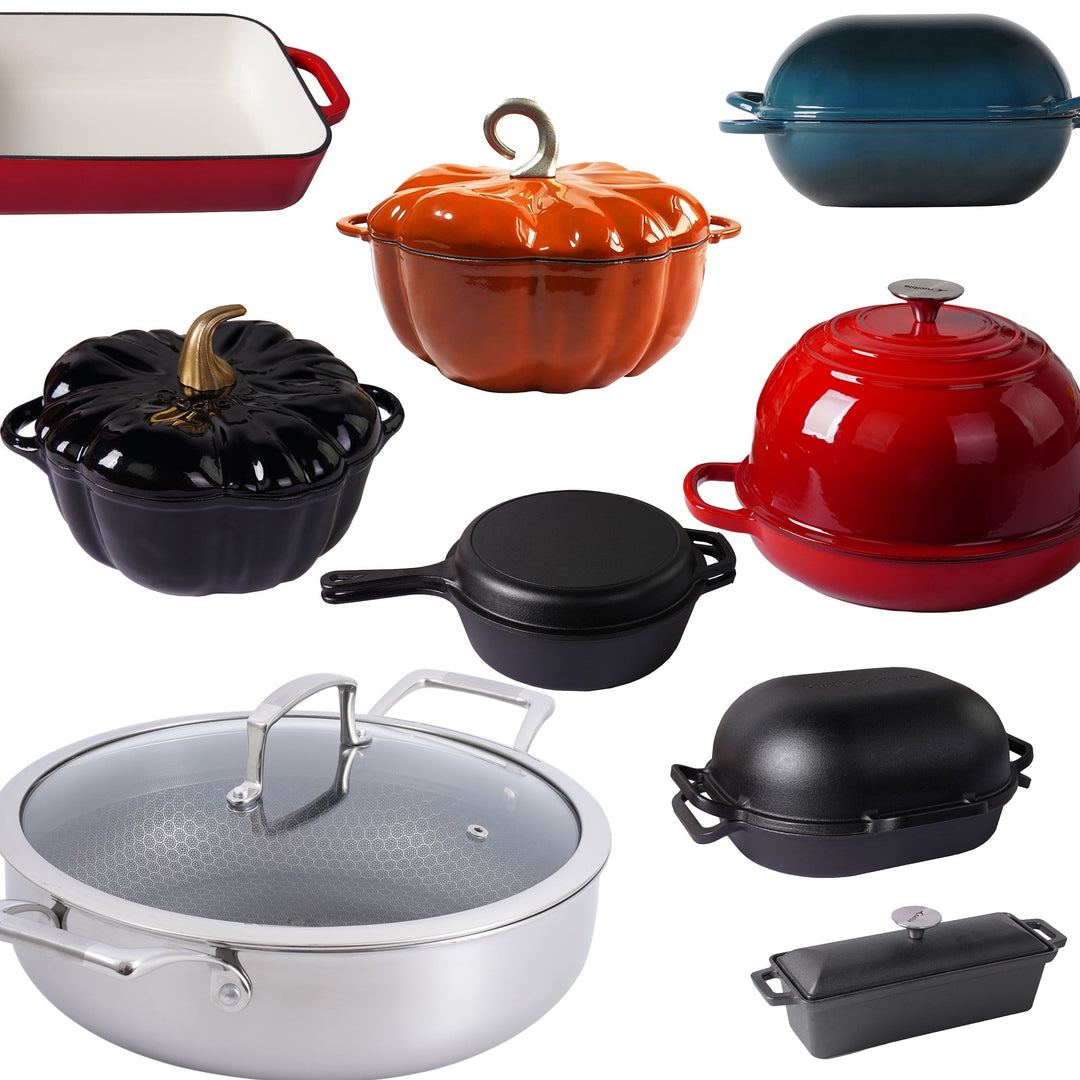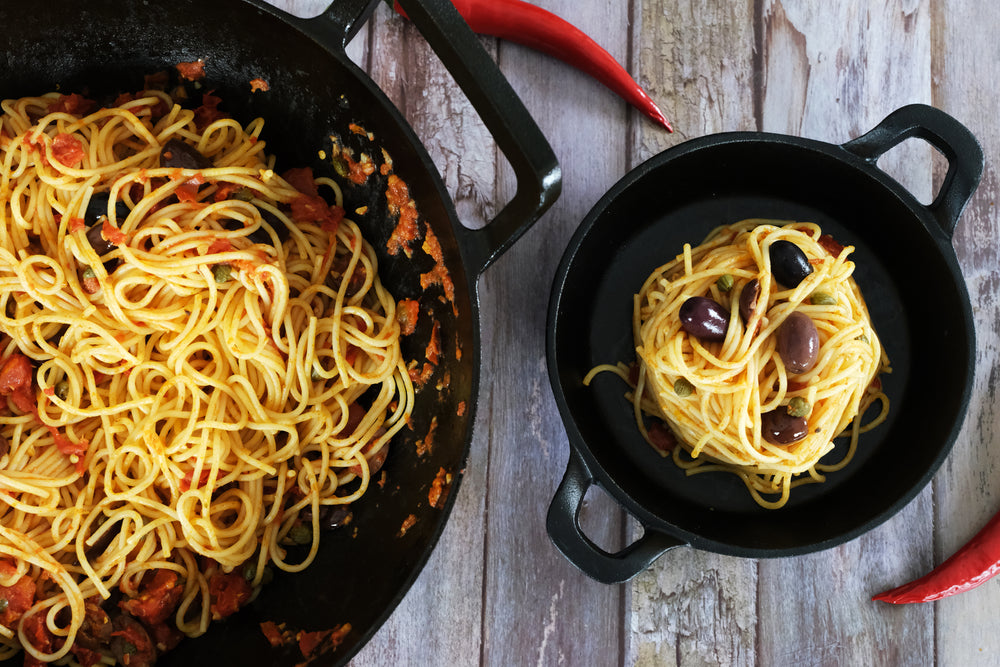Bærekraftig matlaging: Hvordan redusere avfall på kjøkkenet ditt

I dagens verden har bærekraft blitt en avgjørende del av hverdagen vår. Når vi blir mer bevisste på vårt miljøavtrykk, kan små endringer på kjøkkenet redusere avfall betydelig og fremme en grønnere livsstil. Å redusere kjøkkenavfall er ikke bare bra for planeten, men hjelper også med å spare penger og ressurser. Her er en omfattende guide til hvordan du kan omfavne bærekraftige matlagingsvaner og redusere avfall på kjøkkenet ditt.
Nødvendig bærekraftig kjøkkenutstyr
-
Gjenbrukbare bakematter i silikon
- Disse mattene er et utmerket alternativ til bakepapir og aluminiumsfolie. De er non-stick, enkle å rengjøre og kan brukes hundrevis av ganger, noe som reduserer behovet for engangs bakeplater.
-
Glassbeholdere
- Holdbare og miljøvennlige glassbeholdere er perfekte for å oppbevare rester, ferdiglagde måltider og varer i spiskammeret. De tåler mikrobølgeovn, og i motsetning til plast avgir de ikke kjemikalier i maten.
-
Bivokspapir
- Gjenbrukbare bivokspapir er et fantastisk alternativ til plastfolie. De kan formes rundt mat og beholdere, holder maten fersk samtidig som de reduserer plastavfall.
-
Støpejernskokekar
- Cast iron pots and pans er utrolig holdbare og allsidige. De kan brukes på komfyren, i ovnen og til og med på et bål, noe som gjør dem til et bærekraftig valg for ulike matlagingsbehov.
Tips for å redusere avfall under matlaging
-
Måltidsplanlegging
- Å planlegge måltidene dine for uken hjelper deg med å kjøpe bare det du trenger, noe som reduserer sjansen for at mat blir dårlig før du rekker å bruke den. Lag en handleliste og hold deg til den for å unngå impulskjøp.
-
Riktig oppbevaring
- Lær hvordan du oppbevarer frukt, grønnsaker og andre lett bedervelige varer riktig for å forlenge holdbarheten. For eksempel, oppbevar urter i et glass med vann, lagre rotgrønnsaker på et kjølig, mørkt sted, og bruk pustende poser til salatgrønnsaker.
-
Utnyttelse av rester
- Vær kreativ med rester! Gjør gårsdagens middag om til et nytt måltid ved å tilsette forskjellige ingredienser eller bruke det i en annen rett. For eksempel kan stekte grønnsaker bli fyll i omeletter eller wraps.
-
Kompostering
- I stedet for å kaste matrester i søpla, begynn med kompostering. Kompostering forvandler matavfall til næringsrik jord som kan brukes i hagen. Selv om du ikke har hage, har mange lokalsamfunn komposteringsprogrammer.
Bærekraftige matlagingsmetoder
-
Storkoking
- Å lage mat i store mengder sparer ikke bare tid, men også energi. Forbered store porsjoner supper, gryteretter og korn, og del dem opp for uken. Dette minimerer energibruken ved å unngå flere matlagingsøkter.
-
Bruke hele ingrediensen
- Bruk oppskrifter som utnytter alle deler av grønnsaker og kjøtt. For eksempel, bruk brokkolistilker i wokretter, og lag kraft av kyllingbein og grønnsaksrester. Dette reduserer avfall og maksimerer verdien av ingrediensene dine.
-
Energieffektiv matlaging
- Velg kjøkkenutstyr som leder varme effektivt, som støpejern eller rustfritt stål. Match grytestørrelsen med kokeplaten, bruk lokk for å bevare varmen, og vurder å bruke trykkokere eller slow cookere som bruker mindre energi.
Miljøvennlige oppskrifter
-
Null-avfall kraft
- Samle grønnsaksrester som løkskall, gulrotender og selleriblader i en frysepose. Når du har nok, la dem småkoke i vann for å lage en smakfull kraft. Du kan også tilsette kyllingbein for en fyldig buljong.
-
Kreative oppskrifter med rester
- Forvandle rester av ris til stekt ris eller riskrem. Bruk tørt brød til krutonger eller brødpudding. Gjenbruk rester av stekt kylling i salater, smørbrød eller tacos.
-
Sesongbasert matlaging
- Å lage mat med sesongens råvarer støtter ikke bare lokale bønder, men reduserer også karbonavtrykket knyttet til transport av råvarer utenfor sesong. Sesongens frukt og grønnsaker er ofte ferskere og mer smakfulle.
Konklusjon
Å omfavne bærekraftige matlagingsmetoder er en givende reise som gagner både husholdningen din og miljøet. Ved å velge miljøvennlige kjøkkenredskaper, planlegge måltider, redusere avfall og være kreativ med rester, kan du gjøre en betydelig forskjell. Start i det små og innarbeid disse tipsene gradvis i rutinen din. Hver liten innsats teller mot et grønnere, mer bærekraftig kjøkken.
















Legg igjen en kommentar